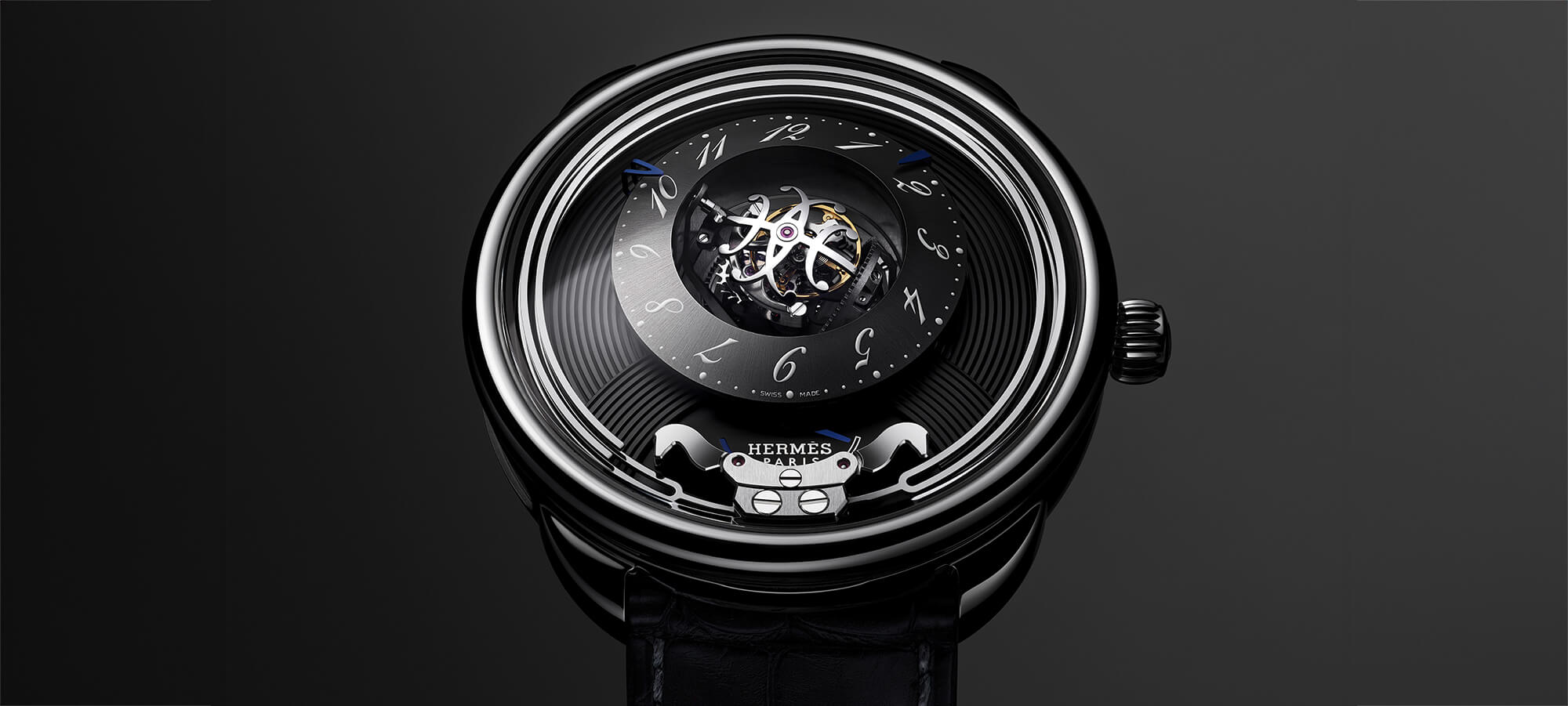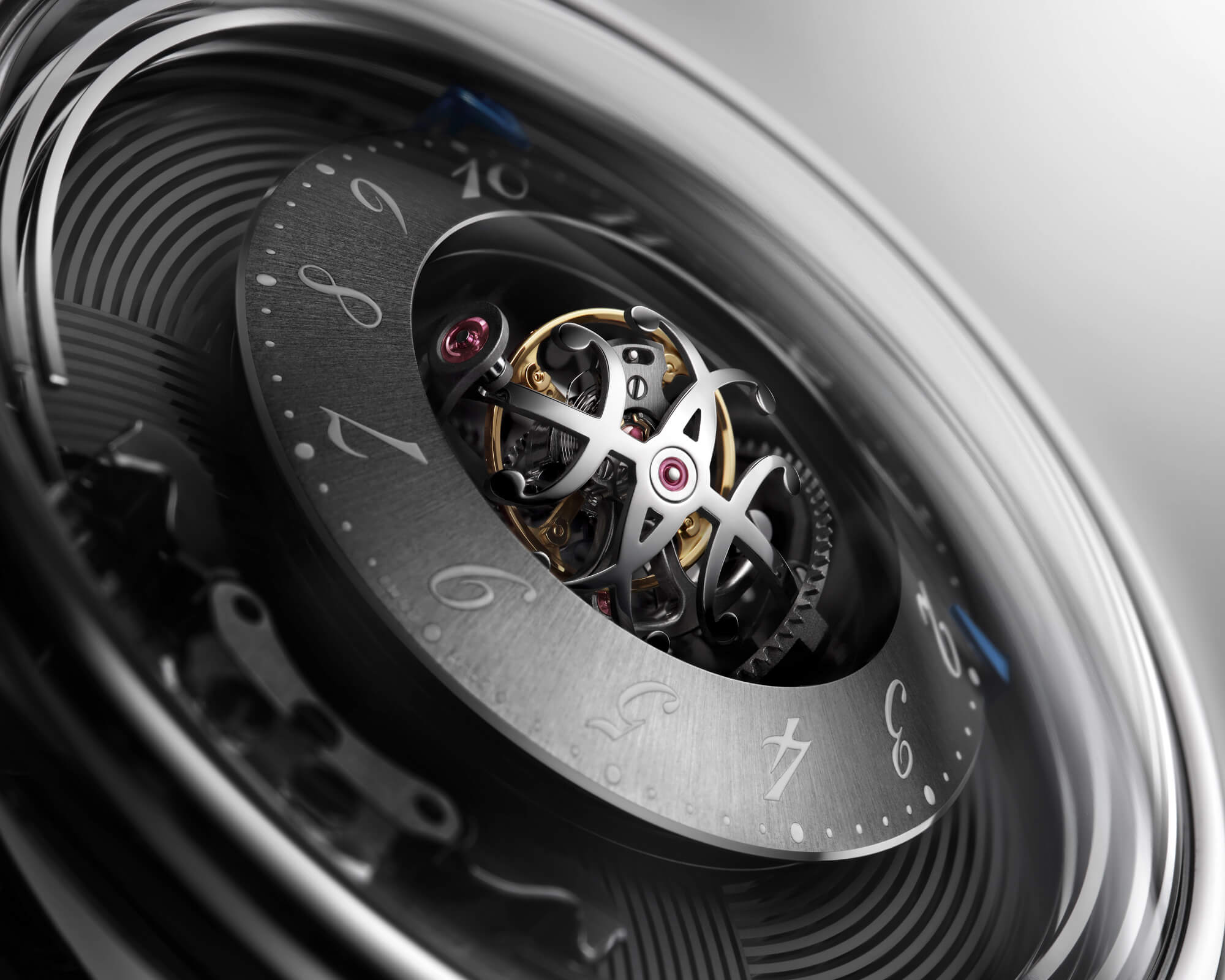
For Watches and Wonder 2024, Hermés has announced a new, very intriguing addition to the Arceau line, which is defined by its rounded case and asymmetrical lugs. The Arceau line has played host to a number of fascinating timepieces, including the L’heure de la Lune and Le Temps Voyageur, both floating, rotating time displays. This year, though, the brand has done something different. The Hermés Arceau Duc Attelé brings the Arceau line to another level with a triple-axis tourbillon and a minute repeater.
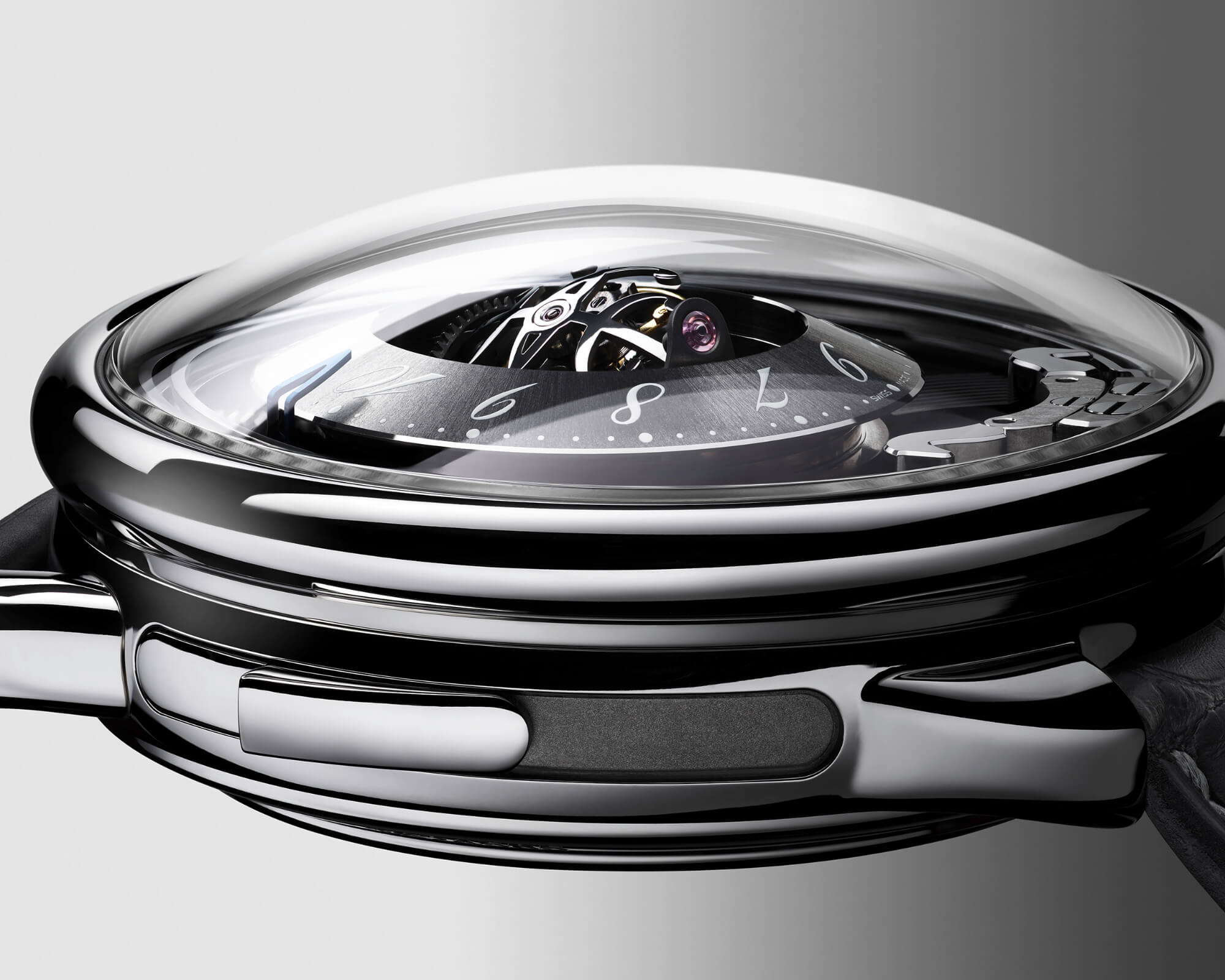
Let’s dispense with the case details first. The Arceau Duc Attelé has a 43mm case available in either grade 5 titanium or 5N rose gold. The case measures 43mm wide and has a crown at 3 o’clock and the minute repeater actuator at 9 o’clock. It is entirely polished, which fits the rose gold nicely, though I would’ve liked to see some contrast on the titanium case. Of course, the signature stirrup lugs at 12 remain, with the more blunted lug forms at 6. The watches are paired with color-matched leather straps fitted with folding clasps in the same metal as the case.
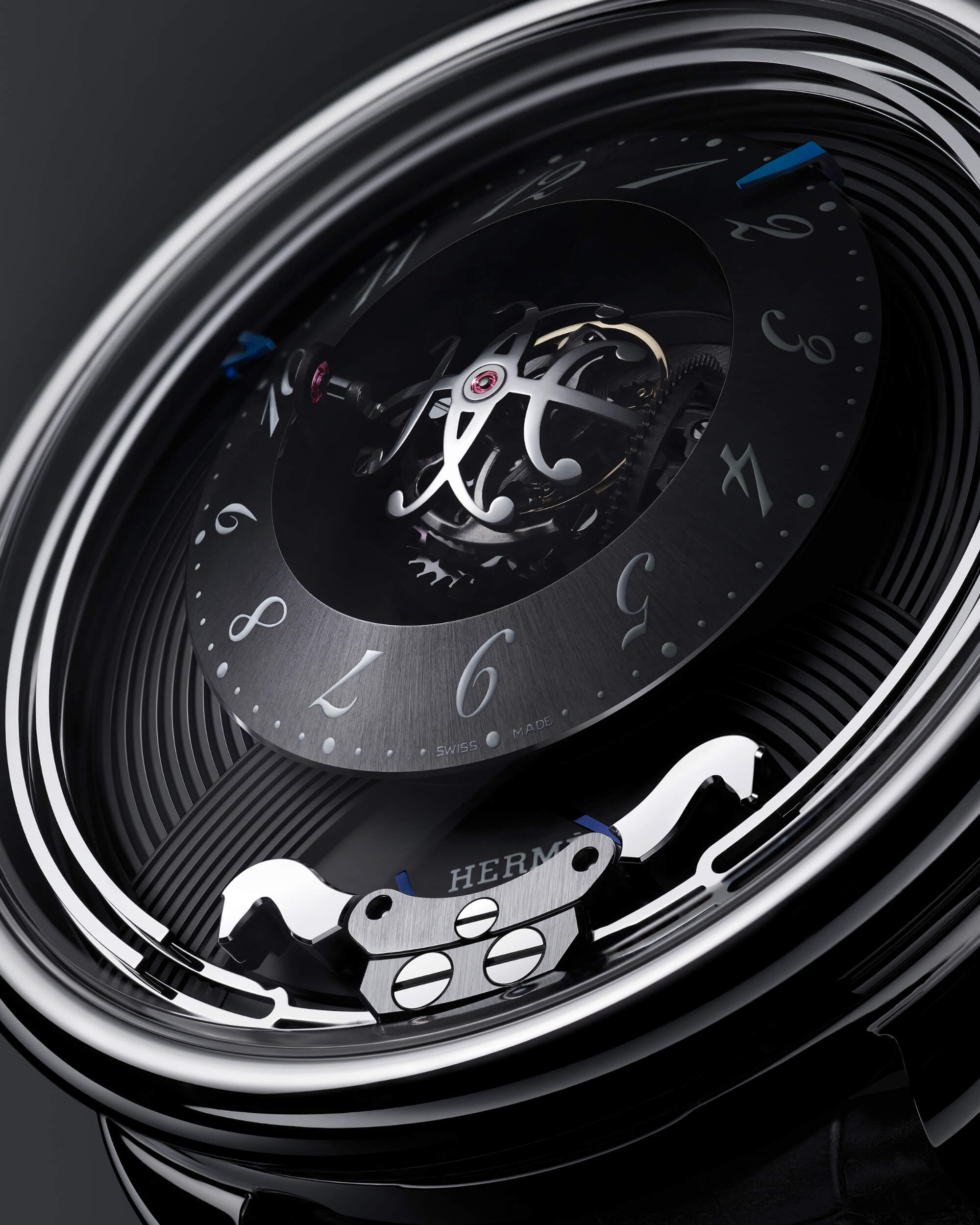
The dial is something to behold, as is often the case with the Arceau line. Under a massive domed sapphire crystal, a floating hour and minutes ring (black on the titanium, white on the rose gold) encircles the triple-axis tourbillon. Two peripheral indicators float around the sloped ring to indicate the time without interrupting the view of the tourbillon. The tourbillon’s polished titanium cage is decorated with intertwining H’s, representing, the brand says, the union of Emile Hermés and Julie Hollande in 1900. The design could also be seen in the ironwork in the original Paris boutique. The three axes complete their turns in 300, 60, and 25 seconds. The dial proper on the titanium model features wide guilloché striping that we don’t typically see in that type of engraving, with the lines occurring in dramatic curves through the dial. On the rose gold case, that same space is occupied by a layer of sparkling aventurine. At 6 o’clock, the minute repeater hammers are visible, and between them and the hour ring, a power-reserve indicator. The entire dial is traced by the gong of the minute repeater, which chimes the hours, quarters, and minutes when activated.
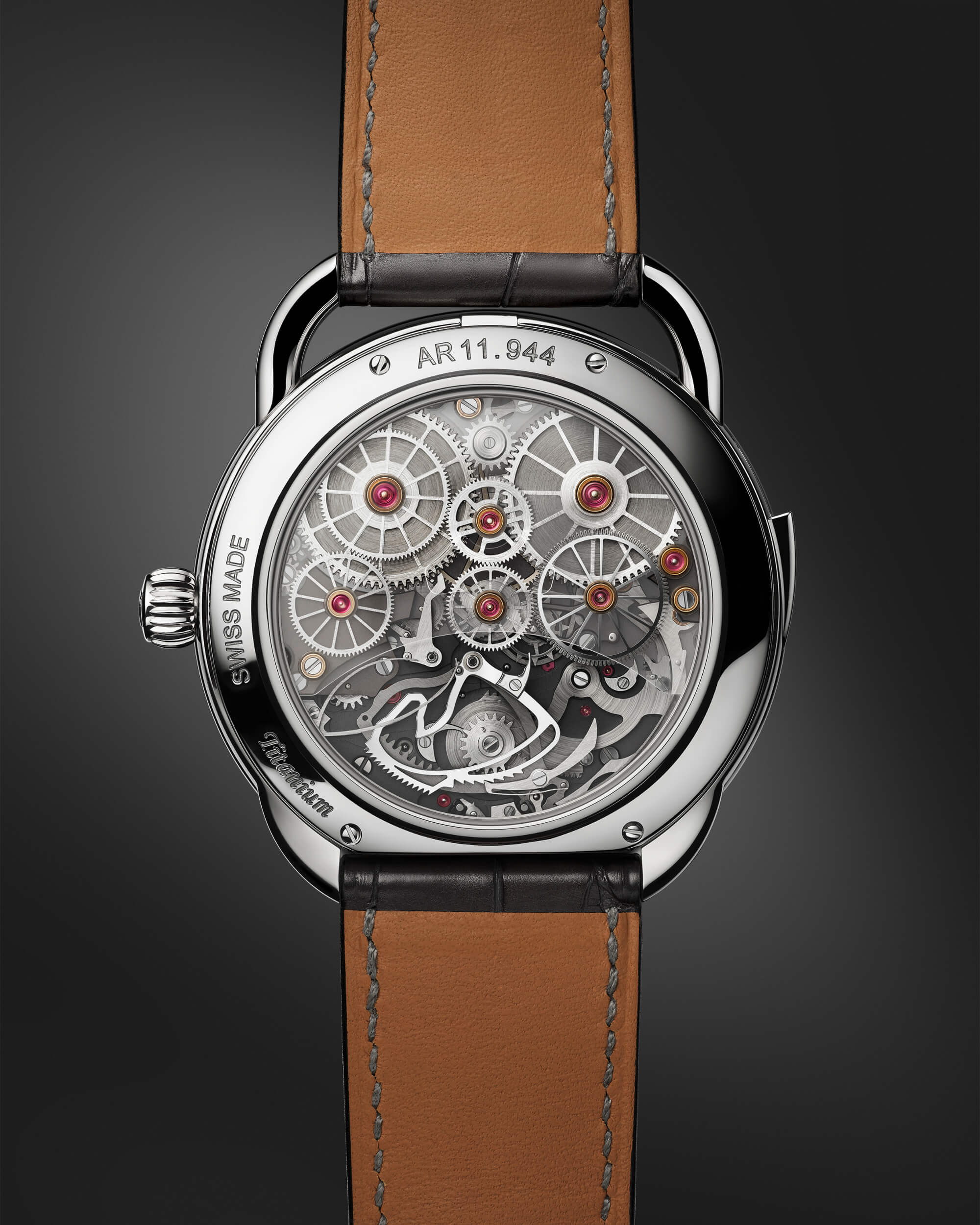
The new Manufacture H1926 reference powers the watch and does so while putting on a show of its own. Visible through the sapphire caseback crystal, the movement is constructed with a symmetry that allows it to resemble the Duc Attelé, a four-wheeled carriage drawn by two horses. The striking bridge is crafted from sapphire, while the other bridges feature anthracite PVD to highlight the chiming mechanism with a horse-and-mane-shaped rack borrowed from the Hermés carriage emblem. The 563-component movement is finished by hand and has polished screws and gold chatons and delivers a 48-hour power reserve (despite an apparent double-barrel system).
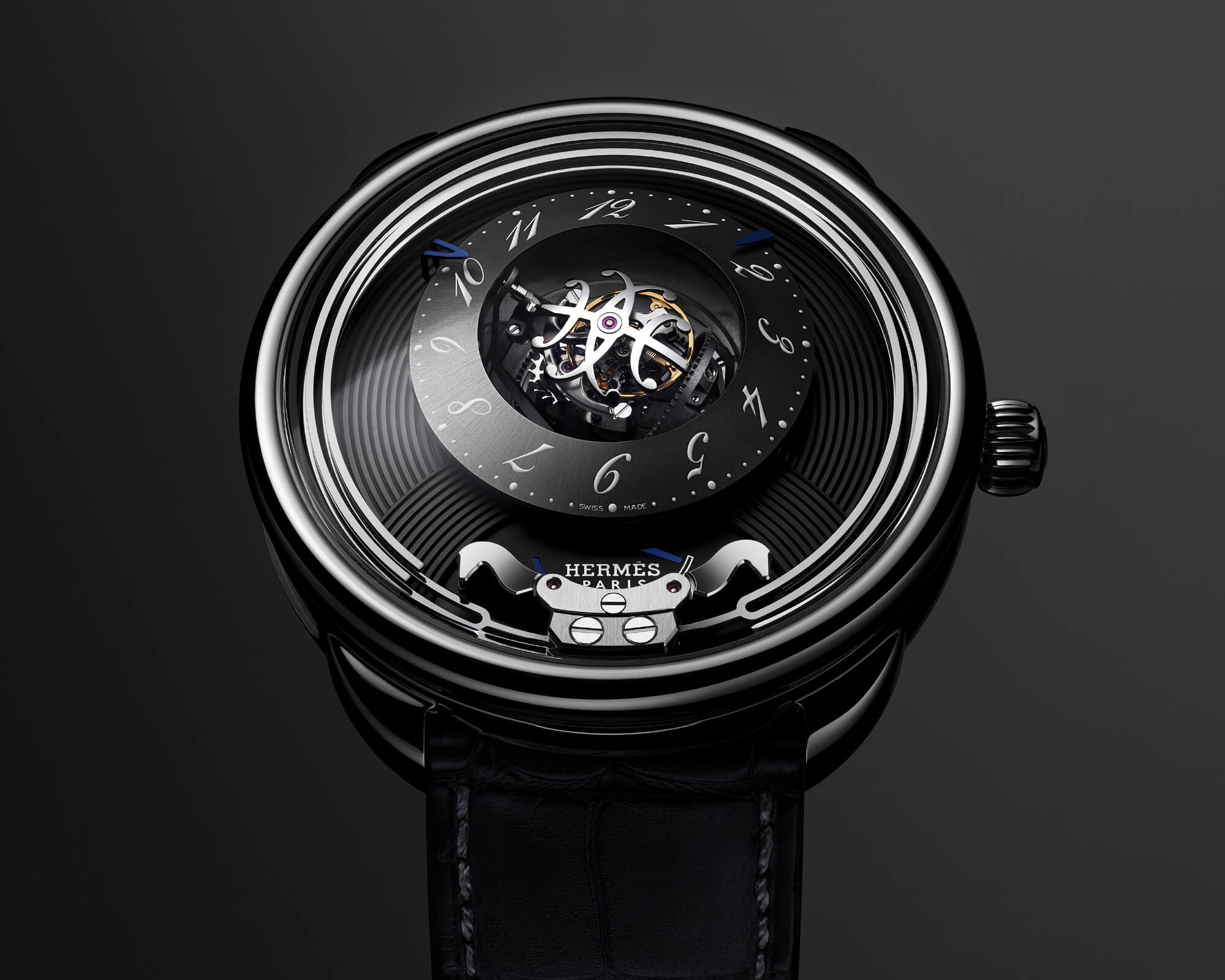
This is a big step up for the Arceau line. While I personally find the L’heure de la Lune the most compelling Arceau ever made, this is a stunning creation. Not only the captivating dial but the creative architecture and design of the movement, both impress. Count this as another win for Hermés, which seems to be on a bit of a streak these days. Pricing for the Hermés Arceau Duc Attelé was not available at the time of publication; both models are limited to 24 pieces. For more information, please visit the brand’s website.

